Planting and caring for aster: how to grow a colorful plant?
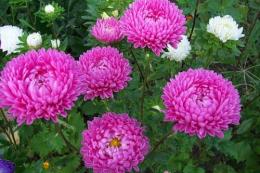
Flowerbeds are painted in bright colors at the end of summer. These are unpretentious but amazing asters blooming. They will enliven the garden at a time when most flowers have ceased to please the eye.
Content
Astra: basic information
Gardeners appreciate and love a noble, beautiful flower. The large and fluffy heads of asters on a long stem make original bouquets. These are common annual asters (Callistephus).
Already in late autumn, perennial plants decorate the flower beds for a long time. These are asters up to 160 cm high and a flower diameter up to 6 cm with pink, blue, red, lilac flowers. The plant is a strongly branched bush with small leaves, which is crowned with simple or double heads.
Aster features:
- She is not afraid of the cold. Some varieties bloom even at -70C.
- The seeds sprout, despite unfavorable weather conditions.
- The plant can be propagated in several ways.
- Growing seedlings is relatively easy. If desired, you can sow seeds directly into open ground.
- The bush is able to regenerate damaged rhizomes: it will tolerate replanting even during the flowering period.
There are a lot of varieties that differ in shape, height and shades. There is an opportunity to show your imagination and create not just a flowerbed, but a masterpiece.
Popular perennial varieties that gardeners use: alpine aster, low-growing, spherical. The first species is propagated by dividing the bush or planting seeds in a flower bed in late autumn or spring. The second aster is an unpretentious flower that needs sun and alkaline soil to grow. The third variety is a neat, spherical, highly branched plant. Blooms until the snow.
How are flowers grown?
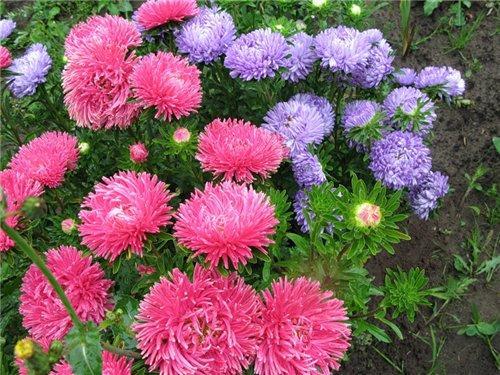
Regardless of the planting method, soil preparation must be done in advance. Even in the fall, when digging up the flowerbed, they add humus.
Annual aster
To plant this type of plant, seeds are used, seedlings or non-seedling methods. You can prepare seed material yourself at the end of summer or purchase it at the store.
Propagation by seedlings:
- At the end of March, the material is sown in boxes or in a greenhouse. For this purpose, grooves are prepared, the seeds are pre-treated with a fungicide.
- Carefully sifted humus is sprinkled on top. Little fertilizer is needed, just a thin layer is enough.
- Weak potassium permanganate solution poured onto the ground.
- The grooves are hidden under paper or polyethylene. Until the first shoots appear, maintain a temperature of +180C.
- After 5 days, remove the film and take the boxes out into the sun. There is no need to water the soil until the seedlings sprout.
- The appearance of the first full leaves is a signal that it is time to plant the seedlings.
- Complex mineral fertilizers are used once a week. Feeding begins 7 days after thinning the plants.
- Asters are planted in open ground in the first ten days of May.
With the seedless method, seed material is placed in the heated soil of flower beds.The seeds are sprinkled with a little soil and hidden under film until the first shoots appear. When shoots appear, the polyethylene is removed. Plants are covered when there is frost.
Diving is optional. You need to sow at intervals of 1-2 cm. Later, asters are thinned out to a distance of 12 cm between flowers. Or you don’t have to pull out the plants at all. Asters planted in this way will bloom quickly.
perennial aster
The best time for propagation and transplantation is spring. At this time, new shoots are formed on the stem, which are used for green cuttings. They take root easily and grow quickly.
Rhizome division is also used. In March, several parts containing a growth bud are obtained from it. When propagating asters, you need to choose one method or another, taking into account the plant variety.
How to properly care for asters?
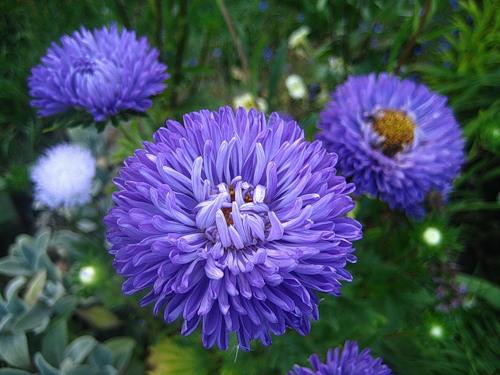
Caring for flowers includes:
- Good location of the flower bed
- Watering
- Feeding
- Weeding
- Loosening
- Prevention, treatment of diseases
- Stepsoning
Astram does well in partial shade. They love the sun, but in extreme heat and drought their appearance suffers. Flowers will grow in a flowerbed protected from drafts and not damp. Bushes do not like excess moisture. They are classified as drought-resistant plants. Despite this, in hot weather, abundant watering is required. If there is not enough water during the period of bud formation, then the heads will never be lush.
Growing in fertile soil, watered and fed plants will bloom until frost. The first mineral fertilizers are applied 14 days after planting the seedlings in the flowerbed. During the formation of buds and flowering, nitrogen is not used as a fertilizer. If the root is in constant dampness, then it feels a lack of air. Photosynthesis and growth slow down. Moisture is the cause of the development of many diseases.
Asters often get sick in inclement weather. The disease manifests itself as swollen and cracked tissues. Fungi take root in the “wounds”. After the rains stop, they continue to parasitize. To get rid of rust, powdery mildew and fusarium, use Ridomil Gold, Tatta.
Spider mites, moths, and aphids are pests that attack the flower. They are destroyed by Actofite or Actellikt. These insecticides do not poison beneficial insects, so they can be used at any time.
Pinching – regulating the growth of side shoots. If the shoots (stepchildren) are not removed, then large inflorescences will not be produced. Lush asters are plants with one stem from which the side shoots are cut off. This procedure is not done for low-growing, bouquet and columnar varieties.
Only an attentive and caring attitude towards asters guarantees lush flowering and colorful look. Even a novice gardener can plant and care for asters. The most important thing is the desire to design a beautiful flower garden and diligence.
Watch how to prevent aster diseases in the video:
Interesting information about the vegetable garden

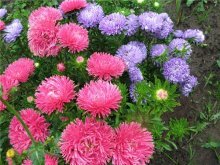
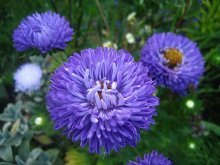
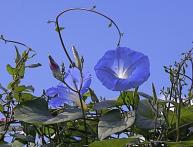
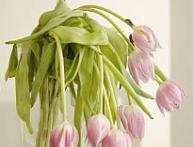
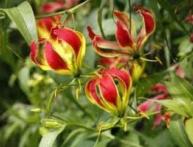
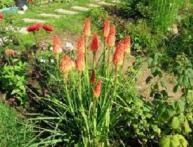

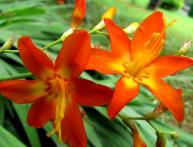
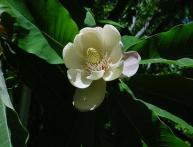
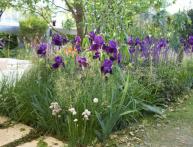
Comments
So much useful information! Now it’s clear why these “unpretentious” asters bloom poorly for me. I planted them in a place that was too damp for them, but sunny. It seemed to me that it couldn’t have been better. I also always plucked seedlings. I will definitely correct my mistakes next spring. Asters are my favorite autumn flowers.
My mother and I also planted aster before. We mostly planted seedlings, then we switched to other flowers—that’s how we experimented. But we haven’t planted an aster for a couple of years now, but it’s growing here. Apparently, the seeds fall off in the fall and sprout in the spring. And I thought that the seeds die in winter. But I didn’t even know about perennial asters.
How beautiful asters look against the backdrop of falling leaves, and in general it’s beautiful when there are flowers in the garden almost all year round. The article directly calls for planting aster, which I will do next year. I read the comments and was once again convinced that this is an excellent and, most importantly, unpretentious flower.
How beautiful asters look against the backdrop of falling leaves, and in general it’s beautiful when there are flowers in the garden almost all year round. The article directly calls for planting aster, which I will do next year. I read the comments and was once again convinced that this is an excellent and, most importantly, unpretentious flower.
My mother and I also planted aster before. We mostly planted seedlings, then we switched to other flowers—that’s how we experimented. But we haven’t planted an aster for a couple of years now, but it’s growing here. Apparently, the seeds fall off in the fall and sprout in the spring. And I thought that the seeds die in winter. But I didn’t even know about perennial asters.